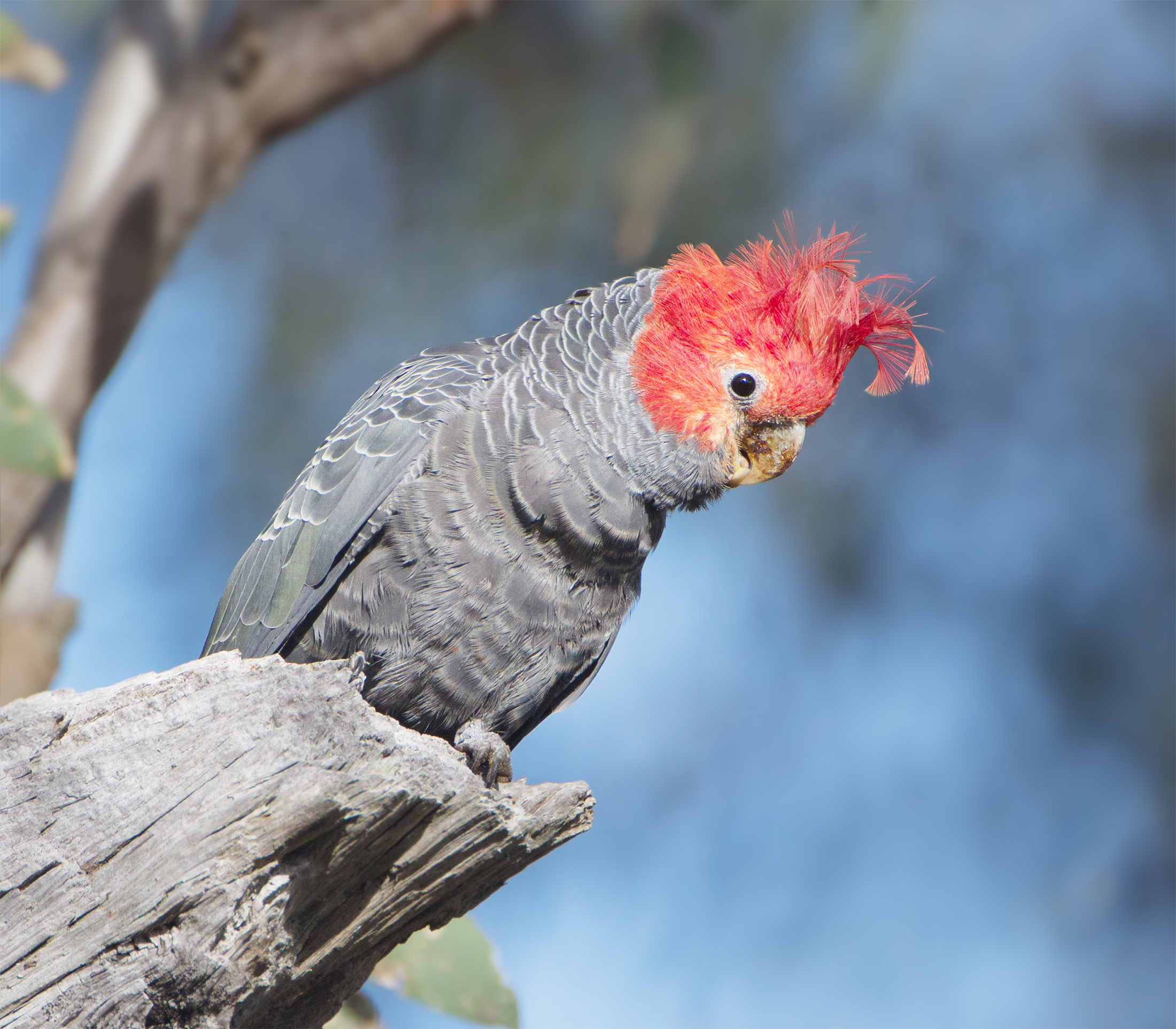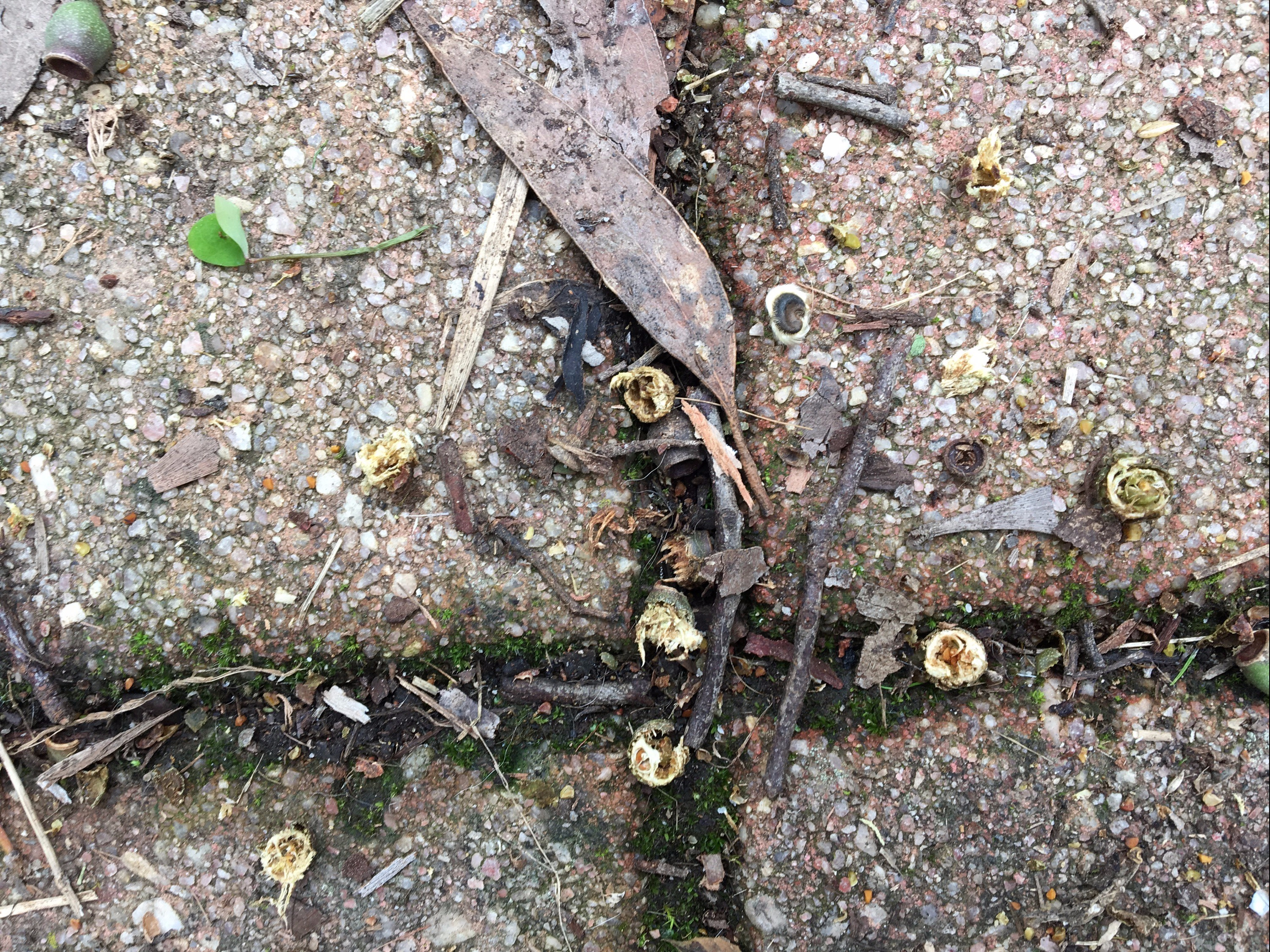Gang gang cockatoos are known mainly in this district for their habit of feasting on Hawthorn berries in Autumn. But one Winter delight I am privileged to witness is the behaviour of a family of gang gangs on my bush block!
Gang gangs are small, stocky cockatoos that are mostly grey, with finely patterned feathers that are tinged with red and green. The males sport a red cap and delightful fringed and floppy crest of bright red feathers.

A beautiful male Gang Gang By JJ Harrison ([email protected]) (Own work) [CC BY-SA 3.0 (http://creativecommons.org/licenses/by-sa/3.0)], via Wikimedia Commons
Gang gangs are known as altitudinal migrants; they move up and down the forests of the Great dividing range – inhabiting mainly tall wet forests in summer, then moving down to more open dry forests, or even box –ironbark in winter. They only occur in South Australia, Victoria, NSW, and are the faunal emblem of the ACT. In NSW they have declined in numbers to such an extent that they are listed as Vulnerable. Their main threats are timber harvesting ( which removes the large old trees required for nesting), wildfire events and planned burns, and climate change impacts.
Very little is known about their breeding habits in the wild. I was delighted to host not one but two gang gang families in the winter of 2012. One family had a young male, the other a young female. I have not seen them here since!
Then late one afternoon two weeks ago, I heard the familiar rising creaky call and saw a couple of grey shapes flitting through the canopy. An adult male and female, with a young female! Once they perched together, the young bird made the classic constant begging call characteristic of the cockatoo family, although a gang gang baby is not quite so crazy and insistent as a corella baby. My bird book, the Handbook of Australian and New Zealand birds (HANZAB) refers to the young gang gang’s call as a buzzing Morse code! The female fed the young a few times, while the male fed quietly on messmate nuts nearby.
On Sunday 23 July, in the morning and in the afternoon, the three birds could be seen messmate gum cracking and devouring. This time the young gang gang was fed by the adult male. During feeding, the young stares at the adult with a crouched, somewhat ridiculous posture, and sways back and forth with its bill open and wheezing incessantly. When the adult regurgitates seeds and other plant matter into its mouth in a pumping motion, the baby makes a series of gurgling notes known as a “food swallowing vocalisation’.

The carefully chewed remains of gum nuts beneath a large emergent Messmate next to our house. Both the Gang gang family and a couple of cockies were responsible.
According to HANZAB, Gang gangs usually breed in Oct-Jan, but may also breed in late August, or early Sept/March with feeding young in late April or August. In 2012, it was June when I noticed the first family, and feeding of the baby continued until early August. Gang gangs nest in hollows in tall, living Eucalypts, and the nest is usually very high up – up to 40 metres have been recorded! The female selects the nest hollow, and two or sometimes three eggs are laid. Both sexes incubate the eggs. In captivity, the young are in the nest hollow until 7 or 8 weeks of age, then after they fledge, fed by the parents for 4-6 weeks after.
All up then the care period lasts for approximately three months – which suggests that the baby I am observing now was born two months ago in May. I took detailed notes on the gang gang families in 2012 and I will do so again, and perhaps write up my observations in the Australian Field Ornithology journal. I would love to hear if you have any breeding observations – especially if you have an active nest hollow!
Thanks for the lesson in attention to detail and the importance of kepping bird lists!